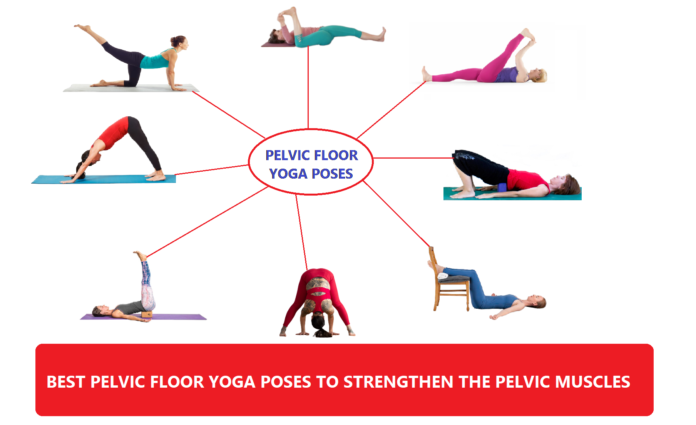Pelvic floor yoga poses can help with the treatment of pelvic floor muscle dysfunction. A lot of people do not know how the pelvic floor works and how to take care of it. However, it’s essential to understand its importance because the pelvic floor muscles do a lot for our bodies every day. While exercises for strengthening the arms or toning the legs are well-known, working out the pelvic floor may not be as straightforward.
The best part is that you can do these pelvic floor exercises at home, so there’s no need to see a physical therapist or attend a yoga class. Just grab your yoga mat, and you’re good to go.
Practicing yoga poses for pelvic floor can stimulate and strengthen the muscles while promoting pelvic health. If you’re not into yoga, don’t worry.
There are many other exercises, including kegels, that can help strengthen your pelvic floor. However, it’s worth mentioning that yoga has been clinically proven to improve cardiovascular health, reduce stress levels, and enhance flexibility.
Studies also suggest that yoga can reduce pelvic pain. So, if you give Lindsay’s sequence a try, you not only work on your pelvic floor but also experience relaxation and other benefits.
All you need is yourself, a yoga mat, and some comfortable underwear that can absorb any leaks if needed.
What is Pelvic Floor?
The pelvic floor consists of a group of deep muscles located in your pelvis, which is the area between your hips. These muscles have a basin-like shape and play a crucial role in supporting and holding your pelvic organs in place.
These organs include the uterus, vagina, bowel, and bladder. The pelvic floor muscles also help control the bladder, which means they assist you in holding and releasing urine when you need to go to the bathroom.
It’s important to keep your pelvic floor muscles strong and in good shape. Several factors can cause the pelvic floor muscles to become weak or lose control over the bladder.
Some common reasons include pregnancy and childbirth, intense sports or exercise routines, menopause (which is a natural phase that older women go through), and pelvic or prostate surgeries.
Can Yoga Help Strengthen Pelvic Floor Muscles?
By practicing pelvic floor yoga or doing specific exercises, you can strengthen these muscles. This has several benefits, such as improving your core strength in the abdominal area, increasing sexual sensitivity, and maintaining better posture.
So, taking care of your pelvic floor is essential not only for preventing bladder leaks but also for maintaining a healthy body.
Yoga for the pelvic floor offers a wide range of physical and mental health benefits that cater to people of all ages and abilities.
It can help reduce stress, improve flexibility, and strengthen the muscles of the pelvic floor.
- Yoga enhances the mobility of muscles around the pelvic floor, improving strength and coordination.
- Yoga is beneficial for preventing issues related to a weak pelvic floor and providing relief from pelvic pain.
- It is important to find a routine that works for you to maintain strong and healthy pelvic floor muscles.
Benefits of Yoga for Pelvic Floor
Yoga for Pelvic Floor includes breathing, stretching, and exercises to strengthen the pelvic floor muscles. If you have specific needs, it’s best to see a pelvic floor physical therapist who can create a program just for you.
Yoga and pelvic floor physical therapy can help with various conditions, such as:
- Leaking when coughing or sneezing (urinary incontinence)
- Feeling a sudden need to go to the bathroom (urinary urgency)
- Waking up often to go to the bathroom at night (nocturia)
- Trouble controlling gas
- Long-lasting pain in the pelvic or vaginal area
- Difficulty having regular bowel movements
- Problems with urination
- Discomfort in the lower back, groin, abdomen, hips, and legs
- Painful sex (sometimes after giving birth)
By combining yoga and pelvic floor physical therapy, you can work on improving your pelvic floor health and overall well-being.
Why You Must Strengthen The Pelvic Floor Muscles
Strengthening the pelvic floor muscles is important for maintaining overall health. Here are several reasons why it is essential to prioritize the strength of your pelvic floor muscles:
- Support and Stability: Strong pelvic floor muscles provide vital support and stability to the pelvic organs, such as the bladder, uterus, and bowel. By strengthening these muscles, you can help prevent issues like organ prolapse, which occurs when these organs descend from their normal position.
- Bladder and Bowel Control: A robust pelvic floor helps maintain control over the bladder and bowel. Weak pelvic floor muscles can lead to urinary incontinence (leaking urine) and fecal incontinence (inability to control bowel movements). Strengthening the pelvic floor can improve control over these functions, reducing or even eliminating these problems.
- Pregnancy and Childbirth: During pregnancy, the pelvic floor muscles undergo significant strain due to the weight of the growing baby. Strengthening these muscles can help prevent complications like urinary incontinence and pelvic organ prolapse during and after pregnancy. Additionally, strong pelvic floor muscles can aid in labor and postpartum recovery.
- Sexual Function: Both women and men rely on the pelvic floor muscles for sexual function. Strong pelvic floor muscles can enhance sexual sensations, improve orgasm intensity, and support erectile function in men.
- Core Strength and Posture: The pelvic floor muscles are integral to the core muscles, which provide stability to the spine and pelvis. Strengthening the pelvic floor improves overall core strength, helping to maintain proper posture and reducing the risk of back pain and injuries.
- Aging and Hormonal Changes: As we age, hormonal changes and natural aging processes can weaken the pelvic floor muscles. Regular pelvic floor exercises can counteract these effects, promoting better bladder control, reducing the risk of pelvic organ prolapse, and supporting an active and independent lifestyle.
Strengthing your pelvic floor muscles is essential for overall health and well-being.
By strengthening these muscles, you can enjoy the benefits of improved support, bladder and bowel control, enhanced sexual function, increased core strength, and successful aging.
Make it a priority to care for your pelvic floor muscles and live a life of strength, confidence, and comfort.
Best Pelvic Floor Yoga Poses You Can Try
Pelvic floor health is crucial for overall well-being, and incorporating yoga into your routine can be a beneficial way to strengthen and support these muscles.
By engaging in pelvic floor yoga, you can enhance muscle tone, improve flexibility, and reduce discomfort associated with pelvic floor dysfunction.
You can learn and perform these yoga poses for pelvic floor:
Half Happy Baby Pose
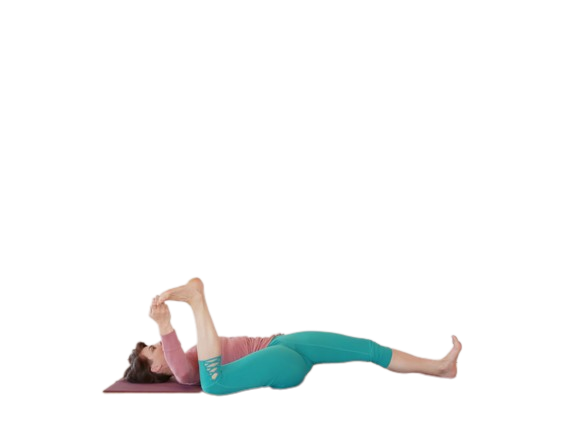
Half happy baby pose is an excellent starting point for pelvic floor yoga.
Begin by lying on your back and bringing one knee toward your chest while keeping the other leg extended.
Gently hold onto the shin or foot of the bent leg. This pose helps stretch and strengthen the pelvic floor muscles, promoting flexibility and alleviating tension.
Reclining Big Toe Pose
Reclining big toe pose is performed by lying on your back and drawing one knee toward your chest.
Use a strap or towel to loop around the arch of the foot, and extend the leg upward while keeping it straight.
This pose stretches the pelvic floor, hamstrings, and groin, aiding in the release of tension and promoting muscle relaxation.
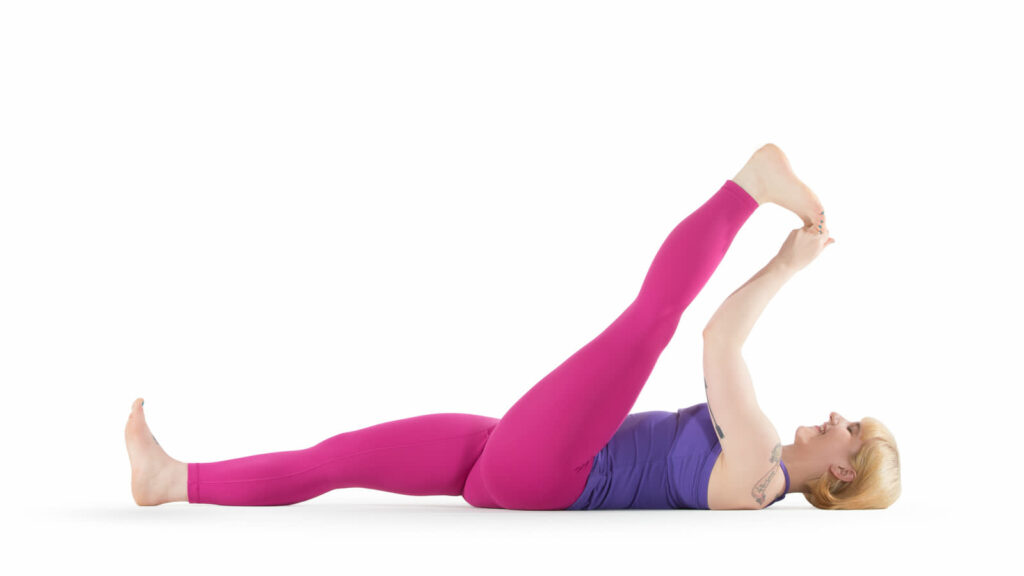
Supported Bridge Pose
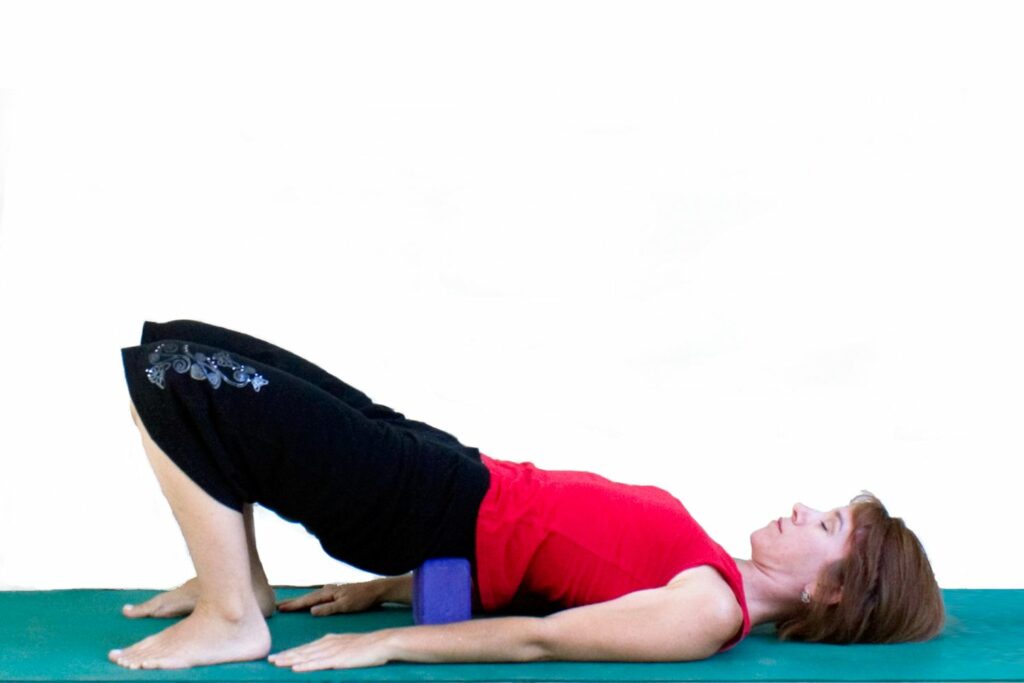
Supported bridge pose involves lying on your back with your knees bent and feet flat on the floor.
Place a yoga block or bolster beneath your sacrum and gently lift your hips upward.
This pose strengthens the glutes, hamstrings, and pelvic floor muscles while improving pelvic stability and reducing discomfort.
Legs Elevated on a Chair Pose
To perform this pose, lie on your back near a wall with your legs resting vertically against the wall.
You can use a chair or folded blanket for support. This inversion pose promotes circulation and relaxation in the pelvic region while also strengthening the pelvic floor muscles.
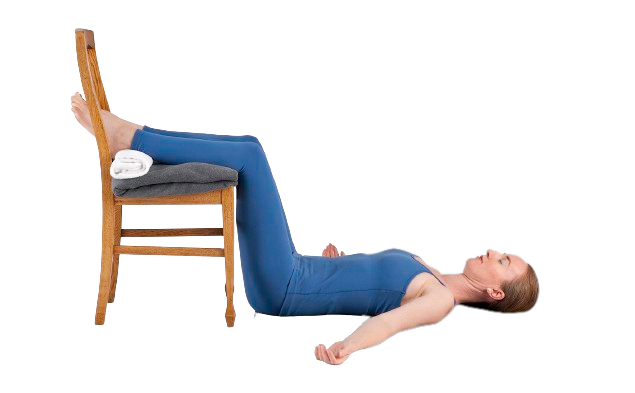
Dynamic Tabletop Yoga Pose for Pelvic Floor
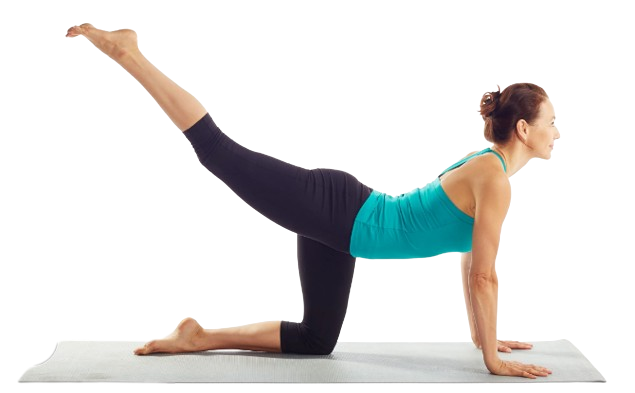
Begin on all fours with your hands under your shoulders and knees under your hips.
Inhale as you arch your back, dropping your belly and lifting your tailbone towards the ceiling (Cow pose).
Exhale as you round your spine, tucking your tailbone and drawing your chin towards your chest (Cat pose).
This dynamic movement activates and releases the pelvic floor muscles, fostering mobility and coordination.
Downward Facing Dog
Downward facing dog is a well-known yoga pose that offers numerous benefits for the pelvic floor.
Start in a plank position, then lift your hips up and back, forming an inverted V shape with your body.
This pose elongates the spine, stretches the hamstrings, and engages the pelvic floor muscles, promoting strength and stability.
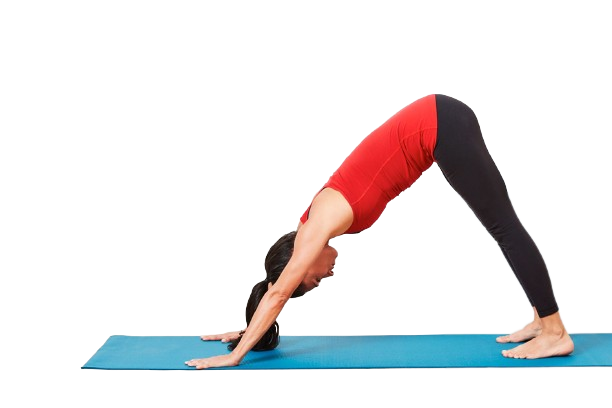
Wide-Legged Standing Bend
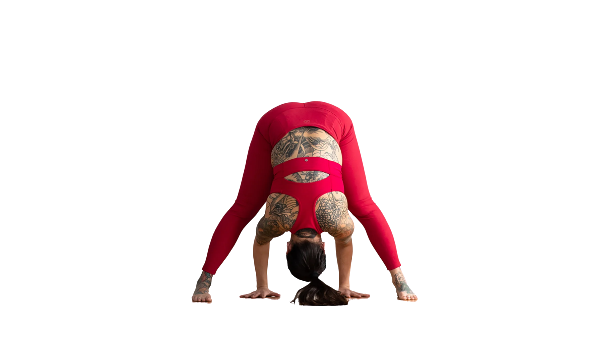
Stand with your feet wide apart, toes pointing forward.
Slowly hinge at the hips and fold forward, reaching your hands towards the floor or using blocks for support.
This pose stretches the inner thighs, hamstrings, and lower back, while also releasing tension in the pelvic floor.
Warrior Poses
Warrior poses are powerful poses, such as Warrior II, are excellent for pelvic floor health.
Start with a wide-legged stance, turn one foot outward, and bend the front knee while keeping the back leg straight.
This pose engages the glutes, hips, and pelvic floor, strengthening the muscles and improving overall stability and balance.
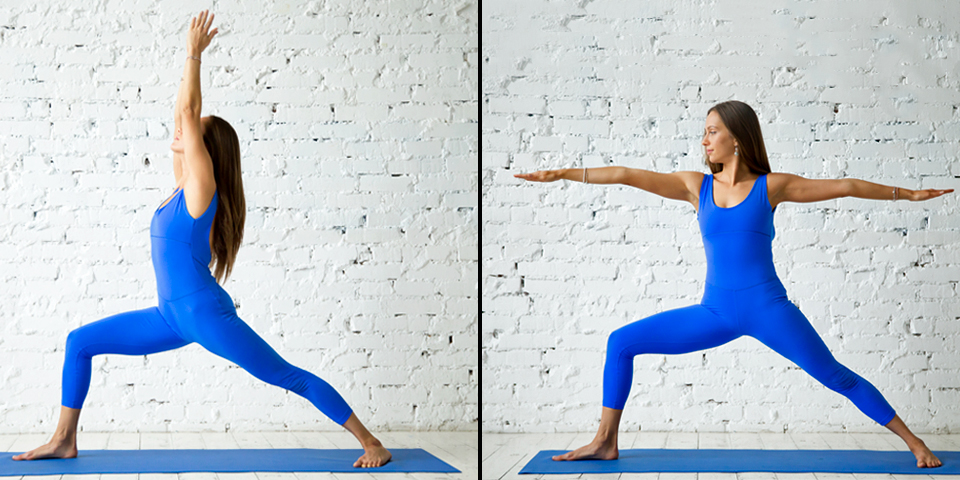
Legs up Against a Wall Pose
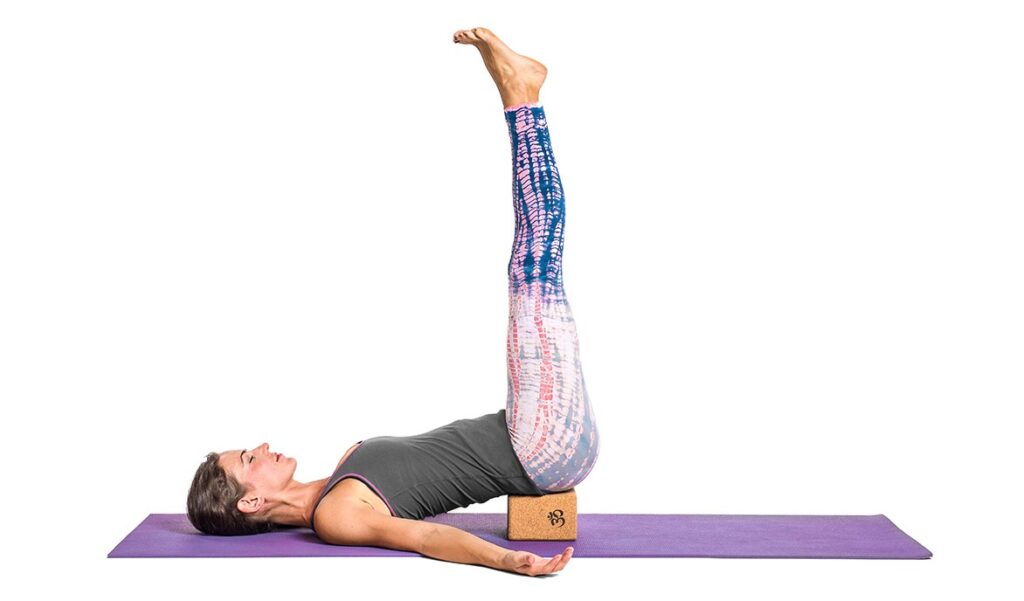
Lie on your back with your buttocks touching the wall, and extend your legs upward against the wall.
This pose helps to alleviate pressure on the pelvic floor, improves blood flow, and relaxes the muscles.
Recommendation
What’s the Best Time of Day to Do Yoga?
What is an Innie and Outie Vagina?
How to Do Pigeon Pose (Eka Pada Rajakapotasana) In Yoga
Conclusion
Practicing these pelvic floor yoga poses into your routine can contribute to the strength, flexibility, and overall health of your pelvic floor muscles. These poses, including half happy baby, reclining big toe, supported bridge, legs elevated on a chair, dynamic tabletop, downward facing dog, wide-legged standing bend, warrior, and legs up against a wall pose, target specific areas of the pelvic floor while providing relaxation, strength, and relief from discomfort. Keep in mind to consult with your doctor before starting any new exercise regimen if you suffer from pelvic floor dysfunction. Embrace the power of yoga to nurture and support your pelvic floor, and enjoy the benefits of a stronger, more resilient foundation for your overall well-being.
Frequently Asked Questions
Q: Can pelvic floor yoga be effective in treating urinary incontinence?
ANS: Yes, yoga that focuses on the pelvic floor can effectively treat urinary incontinence. Urinary incontinence refers to the inability to voluntarily control urination or defecation, often caused by a weakened pelvic floor. Pelvic floor yoga strengthens, stabilizes, and relaxes the pelvic floor muscles, helping patients regain control over urination.
Q: Is pelvic floor yoga a viable option for alleviating menstrual cramps?
ANS: Yes, pelvic floor yoga can help reduce the intensity of menstrual cramps. A study revealed that physical therapy programs, including yoga, significantly improved the strength, flexibility, and relaxation of the pelvic floor. This resulted in a notable reduction in pain associated with dysmenorrhea during menstrual cycles.
Q: Can pelvic floor yoga provide relief for endometriosis?
ANS: While there is no known cure for endometriosis, pelvic floor yoga can help manage symptoms and alleviate pain. However, it’s important to note that treating endometriosis typically requires a comprehensive approach beyond pelvic floor yoga alone.
Q: Is pelvic floor yoga a suitable approach for addressing pelvic organ prolapse?
ANS: Yes, pelvic floor yoga can be beneficial in treating pelvic organ prolapse, but caution should be exercised. Certain yogic practices, like Mulabandha, can be helpful, while some exercises may increase intra-abdominal pressure, potentially worsening the condition. Refer to this post for more information.
Q: Can practicing pelvic floor yoga enhance sexual experiences?
ANS: Yes, pelvic floor yoga can improve sexual function by strengthening and stabilizing the pelvic floor, reducing pain, and lowering the risk of disorders. It also promotes body awareness and the ability to relax the necessary muscles for pain-free penetrative sex, thus positively impacting sexual experiences.

